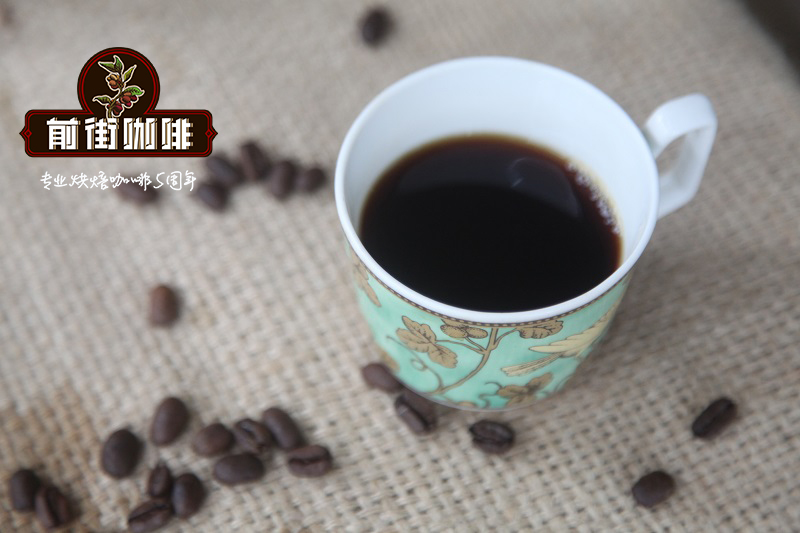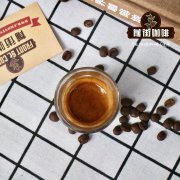How to make good coffee in Coca Coca, Colombia? how to stew Coca Coffee by hand?

Professional coffee knowledge exchange more coffee bean information please follow the coffee workshop (Wechat official account cafe_style)
Test card
Cauca province is one of the well-known boutique coffee producing areas of Colombian coffee, facing Nalinglong in the west and Vera province in the east. The 29 administrative districts where coffee is grown range from 1758 meters to 2100 Michael above sea level. Like the boutique coffee producing areas in southern Colombia, the climate, rainy season, volcanic soil and other factors have a high degree of homogeneity. A fixed rainfall cycle (the dry season from August to September is followed by a rich rainy season, Rain Water) provides favorable fruiting factors for coffee trees. High-intensity sunshine and low rainfall coincide with the flowering season (July-August), when it also leaves the equatorial windless zone, providing favorable flowering conditions for coffee trees. These factors also contributed to the concentrated harvest in the first quarter of the next year. Compared with other coffee-growing areas in Colombia, the climate is more variable in the daytime temperature: the average daily temperature is as low as 11 degrees, and the average temperature during the day is 18 degrees (the average temperature at night is 4 degrees). This sharp temperature difference between day and night is a boost to the growth of Coca Coffee. The low night average temperature caused by high altitude slows down the ripening of coffee beans, improves the acidity and gives special sweetness.
Sotara is a small town in the middle of Cauca, while the Sotara volcano belongs to the Andes, providing nutritious soil for coffee beans to grow. Coffee cultivation in this area covers an area of about 911 hectares and consists of mountainous areas and three well-known rivers: Caueta, Cauca and Magdalena.
Colombian Cauca micro-batch Rodver Colombia Microlot Cauca Rodelfo Betancourt
■ countries: Colombia
■ producing area: Los Quingos, Cauca
■ altitude: 1720 m
■ treatment: washing
■ level: Excelso
■ variety: Caturra
■ flavor description: fine fruit acidity, fairy grass honey, sweet malt, drupe, round and balanced taste
The land of the smallholder producer Rodelfo Betancourt Rios is located in Los Quingos, a village in the Caldono autonomous region of Cauca province, with a total agricultural land area of 12 hectares, of which a plot of about 10 hectares is used for growing coffee and has about 1.5 hectares of forest reserve. In addition to the unique geographical environment: volcanic soil, 1720 Michael elevation, 2200mm's annual rainfall, and a wide range of pristine forest, Rodelfo is also very careful in growing coffee. He started planting coffee trees 31 years ago and participated in various coffee production training courses. The process from harvest to raw bean treatment is not careless at all. In the coffee fruit ripening stage, coffee cherries are harvested every 15 days, peeled immediately on the day of picking, and washed and fermented for 16-18 hours. The washed raw beans are dried in a ventilated scaffolding for 8-10 days and then stored for 60 days before export. This year, Rodelfo also began to analyze and find the best ripening point for coffee, that is, the right Degrees Brix, and bought a brand new, well-ventilated dryer.
How to make Colombian coffee [Rodford small farmer micro-batch in Cauca area] well?
Qianjie Coffee hand reference: weigh 15g of coffee powder, pour it into the grinder to grind moderately, the finished particles are slightly thicker than salt, we use BG bean grinder to scale 5R (standard sieve pass rate 60%), water temperature 89 degrees, V60 filter cup extraction, recommended powder / water ratio around 1:15.
The hot water in the hand flushing pot draws a circle clockwise with the center of the filter cup. Start the time when brewing, brew the coffee to 30g in 15 seconds, then stop the water injection, and when the time is up to 1 minute, the second water injection. The second water injection is the same as before, draw a circle clockwise with the center of the filter cup, and the water flow should not rush to the place where the coffee powder is connected with the filter paper, so as not to produce channel effect.
Coffee powder to the outermost circle to set aside a circle, and then another circle to the middle, 2 minutes 20 seconds, to the coffee to 220g, brewing coffee is finished.
| Japanese Ice hand Chong [Rodford small Farmer Micro batch in Cauca producing area]
Qianjie coffee ice hand brewing [Rodford small farmer micro-batch in Cauca producing area] reference:
Colombian coffee [Rodford small farmer micro-batch in Cauca], light medium baking, BG bean grinder scale 5m (standard sieve pass rate 67%)
20 grams of powder, 150 grams of ice, 150 grams of hot water. The water temperature is 90 ℃ higher than the recommended normal hand flush, then 1 ℃ higher, the normal grinding small Fuji 3.5 scale, the ice hand flushing is slightly smaller than half a grid-small Fuji 3 scale, the recommended powder (water + ice) ratio is 1:15.
The amount of steaming water is 40 grams and the steaming time is 30 seconds.
Water injection by stages, 60 grams of water in the first section and 40 grams of water in the second section. Use a thin but high water injection column and stir hard to make the coffee powder fully tumble, but be careful that the water level is not too high and do not rush to the edge of the filter paper.
The whole extraction time is about two and a half minutes (close to the normal extraction time of 20 grams of powder).
END
Important Notice :
前街咖啡 FrontStreet Coffee has moved to new addredd:
FrontStreet Coffee Address: 315,Donghua East Road,GuangZhou
Tel:020 38364473
- Prev

Columbia Canoe Manor Stripe Bourbon hand-made Coffee Powder ratio Parameter suggestion _ Stripe Wave side introduction
Professional coffee knowledge exchange more coffee bean information please follow the coffee workshop (Wechat official account cafe_style) corrugated side (Stripped Bourbon) is a natural mutant. Its place of origin is Huilan District, Colombia, growing 1800 meters above sea level. Cesar Morales bought La Palma Farm in 2014, hoping to give his family a better life. Due to Ce
- Next

How to hand punch Colombia LOD contest Hope Manor coffee beans_Ice hand punch Colombia teaching
Professional coffee knowledge exchange More coffee bean information Please pay attention to Coffee Workshop (Weixin Official Accounts cafe_style) Colombia has been a participant in COE (Cup of Excellence, a fine coffee rating system) before. After the 2015 COE competition, it announced the suspension of COE projects in Colombia. In 2016, Colombia hosted its first coffee quality contest
Related
- Detailed explanation of Jadeite planting Land in Panamanian Jadeite Manor introduction to the grading system of Jadeite competitive bidding, Red bid, Green bid and Rose Summer
- Story of Coffee planting in Brenka region of Costa Rica Stonehenge Manor anaerobic heavy honey treatment of flavor mouth
- What's on the barrel of Blue Mountain Coffee beans?
- Can American coffee also pull flowers? How to use hot American style to pull out a good-looking pattern?
- Can you make a cold extract with coffee beans? What is the right proportion for cold-extracted coffee formula?
- Indonesian PWN Gold Mandrine Coffee Origin Features Flavor How to Chong? Mandolin coffee is American.
- A brief introduction to the flavor characteristics of Brazilian yellow bourbon coffee beans
- What is the effect of different water quality on the flavor of cold-extracted coffee? What kind of water is best for brewing coffee?
- Why do you think of Rose Summer whenever you mention Panamanian coffee?
- Introduction to the characteristics of authentic blue mountain coffee bean producing areas? What is the CIB Coffee Authority in Jamaica?

